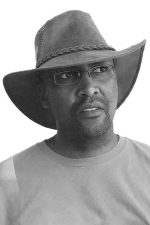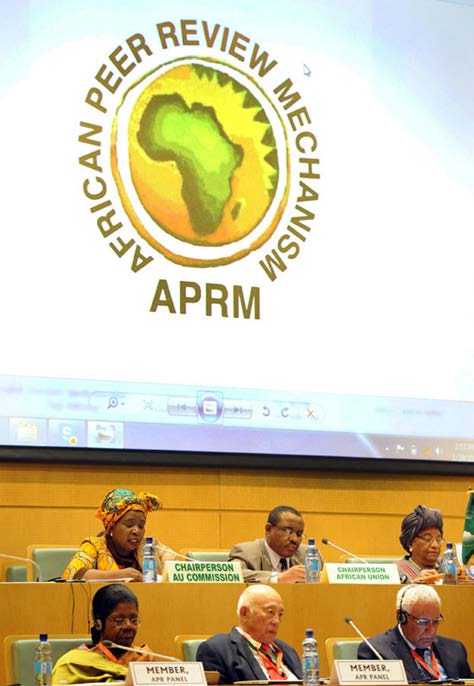 While South Africa is a developmental state on paper, it’s not keeping pace with Asian nations’ successes
While South Africa is a developmental state on paper, it’s not keeping pace with Asian nations’ successes
When Jacob Zuma assumed power in 2009 he promised to work on turning South Africa into a “developmental state”, a phrase that littered many of his speeches.
This came as the governing African National Congress (ANC) needed new ideas to deliver a democratic dividend to the black majority, which was vulnerable to the country’s unemployment crisis and income inequality. This inequality has since become the widest in the world alongside Brazil’s.
Just two years before the ANC had made the pursuit of a developmental state official party policy, it had appeared set on following paths charted by the Asian Tigers, which had achieved rapid economic growth through export-oriented economies propelled by market incentives, and a strong private sector.
The modern developmental state was pioneered by Japan’s recovery after the Second World War. It moved from a largely agrarian economy to an industrial one within a generation and attracted legions of admirers, and narratives that the country had achieved a miracle. The developmental state model is characterised by an activist state that moves to alter market incentives, reduce risks, present entrepreneurial visions and manage conflicts.
South Africa was unique in declaring its intention to become a developmental state, rather than be defined so after the fact. The belief in a development state appeared to occupy Zuma’s mind, although he never actually explained it. This was not unusual; many others used the term loosely without accounting for its salient meaning or for the differences between successful developmental states. Being the consummate party man and a likeable team player – qualities that propelled him to the helm of the ANC and the presidency – Zuma stuck to the script as he sought to reassure his supporters in the party, especially those on the left, who had championed the vision of a developmental state.
Although not completely unexpected, the ANC’s desire to build a developmental state came as something of a turnaround for a party that in previous years had believed in nationalisation. Even then, it was also rather ironic for the left in the ANC to support a model whose orientation was capitalist.
“ANC people had operated in an intellectual climate in which it was assumed that only strong state intervention would tackle the inequities created by apartheid,” says Prof. Steven Friedman, director of the Centre for the Study of Democracy at the University of Johannesburg.
But by the time the transition started, many of the options that the ANC elite had admired elsewhere – in Africa and in Cuba, for example – were no longer viable. “The developmental state presented itself as an option which would allow it to rely on an active state role but could not be accused of denying the realities of the market,” Friedman says.
Although used loosely to mean different things to different people, the term “developmental state’’ is usually reserved for the historic experiences of the East Asian Tigers, says Anthony Butler, a professor of public policy at the University of Cape Town.
From Thailand to Indonesia and Malaysia, the Japanese experience was widely copied. It was particularly successful for the five East Asian Tigers: Japan, South Korea, Taiwan, Hong Kong and Singapore.
It is hardly surprising that the developmental state model found takers in South Africa, though it has its share of critics, such as the main opposition party, the Democratic Alliance. The model is largely frowned upon for “picking of winners” – a term used to describe a practice that often masks the cronyism and corruption involved in the support given to some firms, often at expense of others.
No doubt, in appropriating the policy, the ANC had sought to move with the times by paying attention to the success of a model that some even credited for China’s recent spectacular rise as an economic power. Developmental states are not, however, normally associated with the term “state capitalism”. “State-led or state-driven development is a much wider term that encompasses many developmental experiences around the world,” says Butler.
One other ironic twist is that the ANC’s push for a developmental state follows a period of state-led growth prior to the advent of democracy, which spawned a range of development agencies, research institutes and state-owned enterprises. Many of these, such as the Johannesburg Stock Exchange-listed Sasol, now a world leader in petrochemicals, still exist and are highly prized. Some observers have described South Africa as having been more of developmental state during apartheid than it has been since 1994.
While the East Asia developmental state has been described as a “catch-up” model, researchers have been quick to recognise that the model is not easily replicable. For their economic transformation, the Asian Tigers benefited from unique circumstances. Having barely any natural resources, they faced an external threat from powerful neighbours in an uncertain Cold War climate. Lacking natural resources may have helped them avoid the “resource curse” common among many oil producers. Taiwan’s founders, for example, felt vulnerable after having fled from Mainland China, while the Singaporeans felt the same following their expulsion from Malaysia. For Hong Kong it was the fear of communism. Other unique factors included access to American technology and markets in the pre-World Trade Organisation era.
It also helped that the five Asian states were fairly egalitarian societies without a large landowner class. This was in part thanks to Japanese colonialism, which had dismantled the landowner class particularly in Korea. This allowed the state to impose its will on citizens with little resistance. As the main actor the state was able to create an environment in which the business sector had little choice but to accept state-led incentives and conditions if it wanted to grow and prosper.
All these conditions hardly apply to South Africa or any other country in the world.
Butler notes that classical developmental states were authoritarian. They all stole surpluses from rural areas, crushed trade unions, and did not run big social development budgets. Where they spent money, on education for instance, they insisted on strong outcomes.
Where the developmental state model succeeded, it was buttressed by several identifiable pre-conditions:
• Economic growth and competitiveness were the state’s overriding priority.
• Education systems and labour markets were geared towards growth.
• Bureaucracy was driven by excellence and insulated from political interference.
• Embedded autonomy allowed the state to lead development without being captured by vested or sectional interests, in spite of the close relationship between the state, labour and capital.
• Selective industrial policies were coordinated by a pilot agency.
• The state was able to “discipline” capital.
Alice Amsden, a developmental economist, argued (before her death in 2012) that in East Asia, beginning with Japan, subsidies were dispersed on the principle of reciprocity, rather than in a free-for-all. They were disbursed in exchange for concrete performance standards with respect to output, exports and eventually research and development.
On all these conditions and circumstances South Africa falls short. “Trouble is that the ANC seems to confuse the wish to be a developmental state with the reality,” says Prof. Roger Southall, a sociologist at the University of the Witwatersrand. “You don’t become a developmental state just by saying you want to be one.”
South Africa is burdened with a wide range of priorities, including welfare and giving dignity to the previously disadvantaged – often a euphemism for empowering the black elite. “South Africa is a democracy and it is also a post-apartheid state requiring transformation,” says Butler. “This means there are lots of competing priorities to long-range productive investment.”
Friedman agrees; “The key to the East Asian developmental state was to prioritise long-term investment at the expense of current consumption. This is almost impossible in a democracy like South Africa, where the pressures for current consumption are huge.”
South Africa also scores poorly in educational outcomes, especially in maths and science. Excellence in these sciences was one factor that allowed the Asian Tigers to transition from entry-level industrialisation in clothing and textiles, towards manufacturing higher-level industrial products destined for the export market.
In South Africa, the high school dropout rate has resulted in too many school leavers being in neither a training institution nor in a job, even though education accounts for the biggest share of government spending. “The education system is dysfunctional at the bottom and elitist at the top,” Southall observes.
When it comes to the labour market, South Africa appears unable to make the trade-off between short-term job creation and laying the foundation for sustainable growth and higher job creation in the future. The situation is complex, Southall says, with the labour market now “subject to global forces of informalisation and casualisation”.
While the excellence of government services in countries like Singapore is well known, South Africa is far from this, not least because it still cannot make the bureaucracy an employer of choice, attracting the best brains and management skills. The civil service is encumbered by the ANC’s “deployment” policy, allowing the secondment of party loyalists. It is also dogged by regular corruption scandals.
East Asian developmental states have perfected the ability of the state and the private sector to work together towards a common goal without either party being captured by the other. But in South Africa this is not happening because large conglomerates are squeezing out small business in a relatively small market, which is part of the reason black capital feels excluded, Southall says.
Friedman notes that in contrast to the East Asian developmental states, business and government in South Africa do not share common understandings: a history of racial division means that they come from very different backgrounds and levels of trust between them are low. “Also, the importance of labour here means that a government-business relationship is not enough to ensure development,” he says.
South Africa has something close to the opposite of the embedded autonomy associated with the Asian Tigers, says Butler. “There is deep division between business as a whole and the state as a whole, as a result of the historic exclusion of black South Africans from the formal economy. At the same time, there are political channels between specific ‘empowered’ businesspeople and state officials as a result of the politicisation of the black economic empowerment partnerships and party finance relationships.”
A key factor in East Asian developmental states’ success was the pursuit of selective industrial policies coordinated by a single government agency. This protected the national interest from factional and regional ambitions. In Japan this was done through the ministry of international trade and industry, which was also the pioneer and flagship of East Asian developmental states. In addition, the Asian Tigers states were also able to “discipline” business by ensuring that those that received incentives were held to account and expected to meet agreed performance targets, or face penalties such as being allowed to fail.
Again South Africa does not measure well on these principles. There is no recognisable pilot agency to coordinate investment. South Africa’s selective industrial policy is limited, with the heavily supported automotive sector being the flagship programme under the department of trade and industry. Butler says while fast growth based on export-led industrialisation is no longer possible because the international environment has changed dramatically, it still needs to be encouraged to the extent that it can be. South Africa’s ability to discipline capital is also very limited because big business is mobile. The biggest players have secured listings overseas and are increasingly investing in other countries. The country’s racial legacy also still plays a prominent role in sectoral relations, as Friedman has observed.
“Businesses are often prepared to accept high levels of regulation from government, but only if they share common cultural understandings,” Friedman says. This is not the case in South Africa. “Discipline” of this kind might be possible through competition policy, which would allow oligopolies to be aggressively policed and broken up. But competition policy could be open for abuse, says Butler.
For all Zuma’s vagueness on the form of the developmental state he had sought to build, he has been credited with shepherding the crafting of the National Development Plan (NDP), which his cabinet approved in 2010. Many had hoped that the plan could act as a catalyst that would facilitate the process of bringing the state, business and labour together in a partnership that would morph into the promised developmental state. This has not happened.
The plan did not find support among the allies on the left in the ANC who supported Zuma’s rise to power, and is now in limbo. Instead, Zuma –who has been weakened by a series of scandals relating to his own conduct as president – is now talking of “radical economic transformation”, which seems to prioritise land reform.
Friedman says the NDP could still become a catalyst for a common national destiny if it is understood not as a blueprint but as a basis for negotiation. “Contrary to widespread belief, the NDP is less a programme than a set of suggestions, some of which contradict each other, which must be negotiated between the economic actors if they are to trigger changes in the country’s development path,” he says.
It is apparent that it will take more than lip service to bring about a developmental state in South Africa. Zuma is due to be replaced as ANC leader in December without having delivered on his promise, so this task will fall to his successor, if the ANC still has the appetite for such a state.
Wilson Johwa researched the applicability of the South East Asian developmental state model to South Africa as part of his MA at the University of the Witwatersrand, to answer his life-long curiosity as to why some countries achieve economic growth while others never do. Zimbabwe-born, he is currently news editor (digital) at Business Day, South Africa’s influential daily newspaper.













